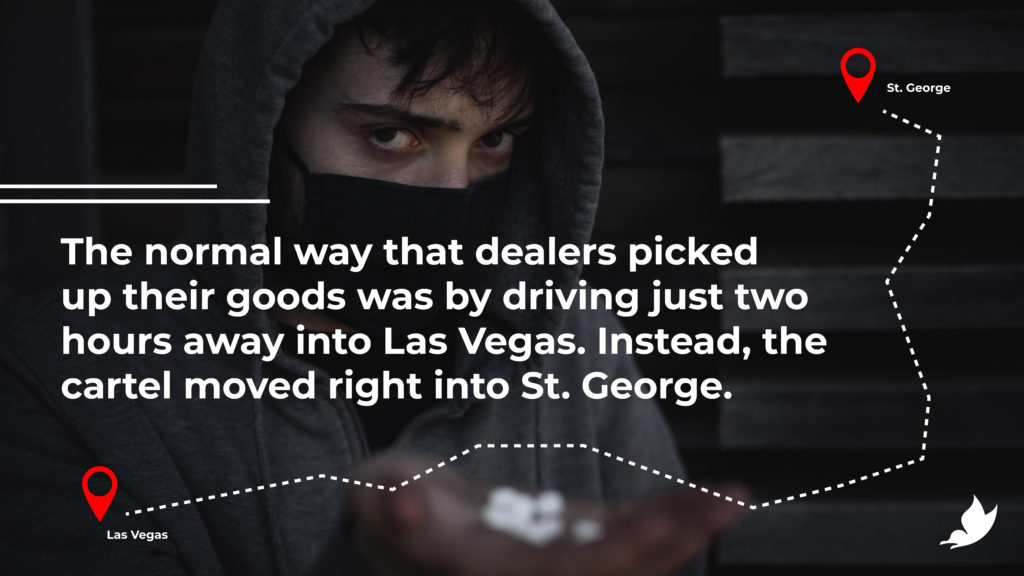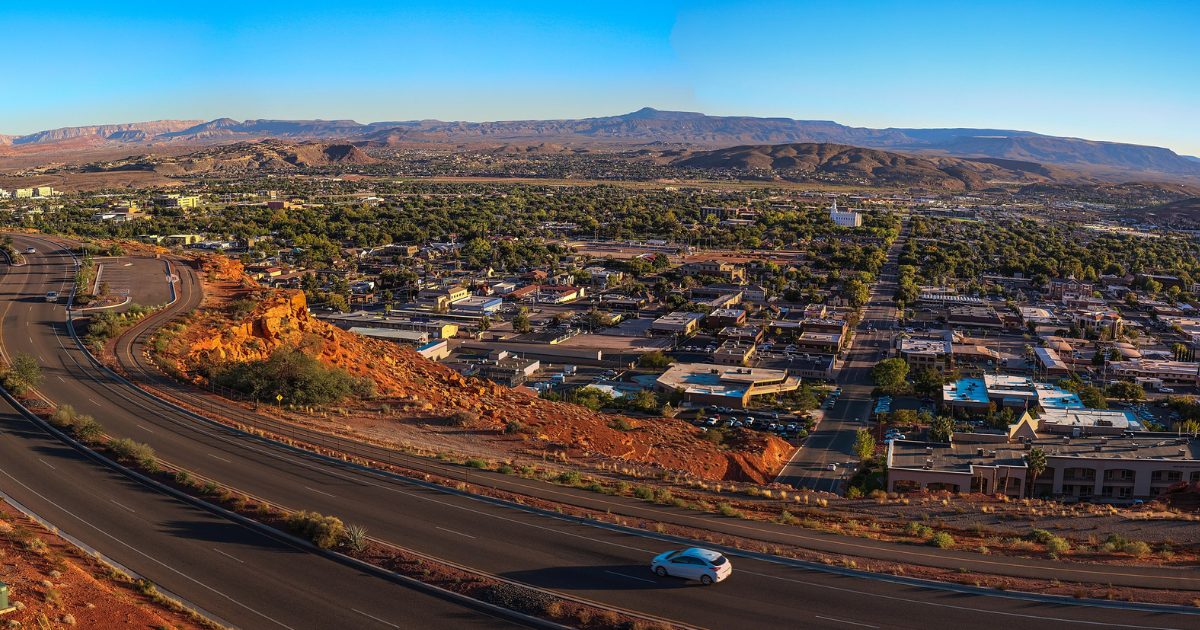Mexican drug cartels operating in and around Las Vegas continually change tactics when it comes to operating zones, shipping drugs, and selling illegal substances. Supply chain management is increasingly volatile. Things are becoming more decentralized. Methods of selling illicit substances have diversified at a rate never seen before in history. Technology is changing rapidly and with it the drug supply chains are, too. A recent case in St. George, Utah has been drawing attention as the perfect example of new tactics and this “Wild West” version of drug cartels.
The Drug Trafficking Game Changes
In the drug trafficking world, the way drugs are shipped and where they’re shipped is a big part of how modern substance abuse in the US has come to be. The normal order of things was always a process that began with smugglers bringing their wares into the US over roads and into California, Arizona, New Mexico, and Texas. Each route is considered the turf of certain cartels and gangs, over which they’re deeply protective. Cartels have also become experts in black market logistics.
Where the risk payoff is high, these naturally risk-inclined supranational organizations know they can get a huge payoff, even if it costs a lot to get the product to the market. It is, to steal a phrase from the financial world, a short sale on the ability of criminal justice organizations to stop the rising tide of increasingly lethal substances. They know just what to do and how to do it when the all-seeing eye of the Department of Homeland Security is looking elsewhere.
The findings of Operation Sour Cream is an excellent example of how the normal order of things is being further subverted by new blood in the cartels and greater resources put toward furthering their reach in the US. For as long as the modern DEA has existed, cartels and gangs have shipped their goods over land to hub cities, or spots where they could fan out into less dense areas of the US and into smaller cities.
Meth Hidden in Sour Cream Container
Brady Wilson, a DEA agent in the southern Utah region that had noticed something was up, knew that they had something big right on their doorstep in Utah. He began collecting information and evidence in his investigation and petitioned the DEA for more funds and resources. Operation Sour Cream was what the DEA called their St. George operation to take down Ángel Rubio Quintana, the source of meth and fentanyl in the area. “Sour Cream” was the name they chose for the operation because the first batch of meth the feds purchased from Quintana was disguised by putting it in an empty five-pound tub of La Crema Mexicana sour cream.
Quintana was a local rancher that appeared to make good money, living just outside of a sleepy neighborhood of retirees, veterans, and average, well-to-do Americans. The Quintanas’ lives were normal and boring by all accounts, taking care of their ranch animals and selling used cars out of the parking lot of a family-owned Tex-Mex restaurant that his relatives worked at. The source of locally-seized meth and fentanyl seemed improbable to the team attached to the case, but they were dead-set on cracking it.

Drug Trafficking Shifts to St. George, Utah
Just outside of Las Vegas, in the quiet state of Utah, 170 people died from fentanyl overdoses in 2021 alone, a 300% increase in fentanyl overdose deaths within a single year. Something was up and the Las Vegas Drug Enforcement Administration branch was interested to know why this was happening. In 2021, the DEA began an investigation into potential drug cartel activity in St. George, Utah, which is only two hours away from Las Vegas, based on an informant’s tip that led them to the center of activity.
Up until the mid-2010s, the St. George area was a lower-level recipient of cartel-delivered drugs from Las Vegas, with Vegas acting as a regional hub for cartel drug shipments coming up from Mexico. The mere suggestion that cartels were directly dealing with lower-level drug shippers and dealers in St. George was unusual, given that models the DEA had put together, based on years’ worth of data, were becoming outdated once again in a way they weren’t expecting.
In St. George, the normal way that dealers picked up their goods was by driving just two hours away into Las Vegas for a few ounces of something or a couple hundred pills at most. This meant that small cities like St. George simply weren’t on the radar for the feds, and so they didn’t anticipate the massive boom in supply and cartel capabilities over the last several years. As the Sinaloa cartel developed a new way of doing business, they decided to “contract” a semiautonomous undocumented individual that had access to logistical resources in the city of St. George. This is where Quintana comes in the picture.

The Genius of Quintana’s Operation
Working out of an unassuming ranch on the edge of town, Quintana had the perfect disguise for doing black market business. Since he worked semi-autonomously, he would hire domestic drug mules that delivered his drug orders from Los Angeles along Interstate 15, through Las Vegas, and up to his ranch in St. George. The suppliers, two manufacturers in Mexico on the front lines of the fentanyl crisis, were ruthlessly efficient Sinaloa lackeys. Their cocaine, meth, and fentanyl products could get across the border and up to St. George through San Diego within two days.
The Sinaloa cartel operation in Mexico was hell-bent on flooding southern Utah with fentanyl pills. Despite running out of fentanyl pills frequently in the early part of Quintana’s operation, they began sending way more than he ordered as time went on. He would push them hard with the expectation of not having to pay back the cartel until he sold them all. The supply of counterfeit M30 opioid pills was blowing up across the border as the cartel responded to skyrocketing demand. This was a wildly successful strategy, but the DEA was hot on their trail.
Drug Raid at Dawn
On February 15, 2022, early in the morning, the DEA was ready to strike. They had nine locations across the state of Utah targeted. Their goal was to put a halt to a significant portion of the operation and bring Quintana and company to justice. Quintana was dragged from his bedroom in pajamas, then charged with conspiracy to distribute fentanyl and methamphetamine, conspiracy to launder money, and unlawful reentry into the US. The ranch was also raided and seized. If Quintana is deported, he could be left to the mercy of the cartel, to whom he owes a lot of money.
As a result of the DEA’s action on this case, overdoses have already begun dropping significantly in Utah. But it’s only a matter of time before the large drug seizures begin again. Las Vegas is once again the main source of St. George’s fentanyl problems, just in a much smaller, more expensive way. This won’t last long.
Learn More About Drug Addiction
To learn more about how Landmark Recovery of Las Vegas can help you tackle an addiction to opioids, give us a call today at 888-448-0302. We’re the only treatment center in Las Vegas that allows patients to undergo everything from detox to graduation under the same roof. We’re on a mission to save a million lives in the next century, and we’re starting in our very own backyard in Las Vegas. Let us help you live beyond addiction and achieve the life you’ve always wanted.

Choose Recovery Over Addiction
We're here 24/7 to help you get the care you need to live life on your terms, without drugs or alcohol. Talk to our recovery specialists today and learn about our integrated treatment programs.




